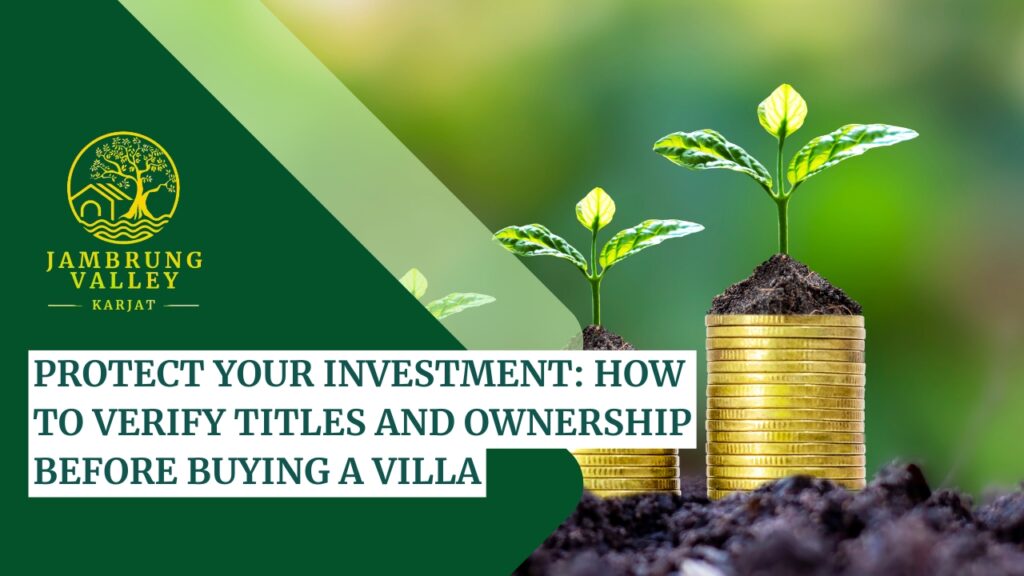
Investing in a villa is a significant financial and emotional decision. While the allure of owning a luxurious property is undeniable, ensuring the investment is legally sound is equally critical. Verifying the property’s title and ownership is one of the most crucial steps in this process. Failure to do so can lead to legal complications, financial losses, and even property loss. Here’s a comprehensive guide to safeguarding your investment by verifying titles and ownership before buying a villa.
Why Title and Ownership Verification Matter
A clear title guarantees that the seller has legal ownership of the property and the right to transfer it. It also ensures the property is free from disputes, encumbrances, or claims. Verifying ownership prevents fraud and protects you from buying a property with unresolved legal or financial issues.
Steps to Verify Titles and Ownership
1. Obtain the Title Deed
The title deed is the most important document proving ownership. Ask the seller for the original title deed and have it verified by a legal expert to ensure authenticity.
- Confirm the name of the owner matches the seller.
- Check if the title deed is free from errors or tampering.
2. Verify the Chain of Ownership
Review the property’s ownership history to ensure it has changed hands legally and without disputes.
- Look for a clear chain of ownership with proper documentation.
- Verify that the property was not sold multiple times simultaneously (a common fraud tactic).
3. Check Encumbrance Certificates (EC)
The encumbrance certificate confirms whether the property is free from legal or financial liabilities, such as mortgages or loans.
- Get the EC from the subregistrar’s office for at least the past 15 years.
- Ensure the property has no unpaid debts or claims attached to it.
4. Validate Land Use and Zoning Approvals
Ensure the property is zoned for residential use and complies with local land use regulations. Villas built on agricultural or unauthorized land may face legal issues.
- Obtain zoning approval documents from the local municipal authority.
5. Confirm RERA Compliance
If the villa is part of a project, ensure it is registered under the Real Estate Regulatory Authority (RERA).
- Check the project’s RERA registration details to ensure compliance with legal standards.
6. Cross-Check Sale Agreements
Review the sale agreement thoroughly to ensure it matches the property details and ownership terms.
- Verify that the agreement includes all necessary information, such as property dimensions, boundaries, and ownership terms.
7. Hire a Legal Advisor
Navigating legal documentation can be complex. Hiring a property lawyer or consultant ensures that every document is verified for authenticity and compliance.
Common Red Flags to Watch Out For
- Incomplete or missing documentation
- Discrepancies in property dimensions or ownership names
- Multiple claims of ownership
- Pending litigation or disputes involving the property
Verifying titles and ownership is a crucial step in buying a villa, safeguarding your investment from potential fraud and legal complications. Taking the time to thoroughly examine documents, review the property’s history, and consult legal experts ensures a hassle-free and secure transaction.
If you’re considering a villa investment, Jambrung Valley offers the perfect blend of natural beauty, strategic location, and future growth potential. With its serene environment and promising infrastructure development, Jambrung Valley is an ideal choice for those seeking a sound and scenic investment. By taking the right steps in ownership verification, you can enjoy both peace of mind and the rewards of owning a villa in this enchanting destination.



